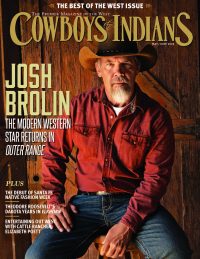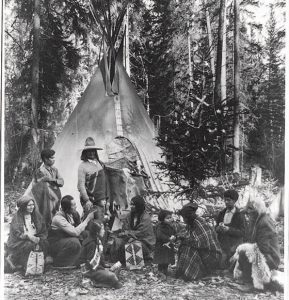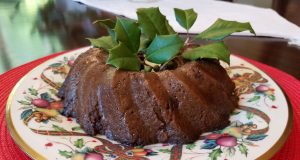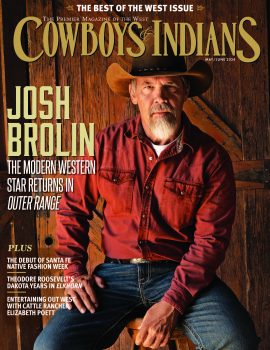Get a familiar taste of the season on the frontier West.
The modern idea of Christmas has roots in the American frontier of the late 19th century. There are the trappings of evergreens, mistletoe (naturally), and wreaths. Table decorations were of white, red, and green. The importance of togetherness and being a good host and the focus on feasting (sometimes overly so) were present. It’s in Idaho, where Avis Ellen Alden, writing in the Idaho Statesman newspaper, recommends readers “buy as big a bunch [of mistletoe] as you can afford.” For wreaths, Alden notes, “Paper roses also are not to be despised,” before detailing how to make them. She told readers not to shy away from using “frost powder” on trees. Artificial holly berries were permissible, but “the best sprig of [real] holly must be saved for the plum pudding before it comes to the table on Christmas Day.”
In 1880, a 10-year-old Nebraska girl wrote to her grandparents about her family’s Christmas. It included a visit to a Christmas tree on Christmas Eve, a red calico dress for herself, and strings of candy and raisins for her and her sister. In 1905, a Missouri paper recommended that the table be as fetching as Christmas dinner and that families should enjoy “ducks, geese, the roast of beef, or loin of pork — whatever may be the Christmas bird.” Indeed, turkey, while popular — and still popular — wasn’t always available.
Englishman Herbert Hilsop, who helped run the Empire Ranch in southeastern Arizona, pitched in to cook Christmas dinner in 1876. The main entrée was composed of four wild ducks seasoned with breadcrumbs, salt, pepper, and butter. Mashed potatoes and plum pudding were also prepared. Although plum pudding was a common Christmas dinner dish, fruitcakes — although often derided today — were the pride of many a frontier homemaker and made and served throughout the holiday season from October to New Year’s Eve.
These stories and others detailed in Tinsel, Tumbleweeds, and Star-Spangled Celebrations: Holidays on the Western Frontier by Sherry Monahan display the breadth and familiarity of seasonal merriment — not to mention the importance of memories — alongside historical and adapted recipes. “This is a nod to tradition and to family heritage,” says Monahan, former president of the Western Writers of America and the author of several books on Western cuisine and Western history, including Frontier Fare: Recipes and Lore From the Old West, California Vines, Wines & Pioneers, Mrs. Earp: The Wives and Lovers of the Earp Brothers, The Golden Elixir of the West: Whiskey and the Shaping of America (co-authored with Jane Perkins), and most recently, California Madams. “Some of the traditions that we have today stem back to traditions that have been around from the 1800s, and even out on the Wild West frontier.”
But again, and most important, it’s personal, especially for Monahan. “I think people always have that one dish or that one tradition,” Monahan says. “I make my great — I can’t tell you how many greats; it’s probably four or five great-grandmothers, from England — her English plum pudding (page 95). I make that for Christmas every year. I didn’t get the recipe until about six years ago. When I make that, I kind of channel my relatives. I just feel like I’m doing something that my ancestors did, we’re still doing it today, and it’s a piece of us that we can enjoy. That’s what holiday celebrations should be about.”
C&I asked Monahan to share a selection of recipes from her book, Tinsel, Tumbleweeds, and Star-Spangled Celebrations — and the family plum pudding recipe — that illustrate a sense of history, a sense of tradition and family, and, of course, share a feast of the senses.
Click here for holiday season recipes
Photography: (all images) Courtesy Sherry Monahan
From the November/December 2019 issue.














